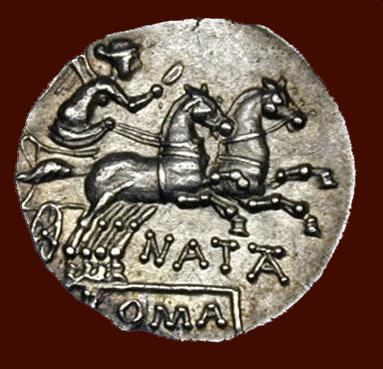




Designed by Nigel G Wilcox


The Paragon Of Metal Detecting
& Archaeology
& Archaeology
Powered By Sispro1
Roman Denarius A.D. - Currency Numismatics,
For Reference ONLY
Everything For The Detectorist
Constantine I Augustus 307-337 AD
Roman Timeline
Roman Menu
Copyright All Rights Reserved by Nigel G Wilcox E-Mail: ngwilcox100@gmail.com
| 1. Estimated Value 2022 |
1.
Roman Gold Medallion of 1 1/2 Solidi of Constantine I (307-337 C.E.)
Constantine I augustus, 307 – 337
Medallion of 1 1/2 solidi, Antioch 326, AV 6.59 g. D N CONSTANTINVS MAX AVG Radiate, draped and cuirassed bust l., raising r. hand and holding globe in l. Rev. CONSTANTINVS ET CONSTANTIVS NOBB CAESS Confronted laureate busts of Constantine II and Constantius II, each wearing consular trabae and holding eagle-tipped sceptre in one hand and globe in the other; in exergue, SMAN. RIC 70 (this coin cited). Gnecchi p. 23, 1 and pl. 8, 15. Alföldi 63. Toynbee p. 197. Kent-Hirmer 643 (this coin). Depeyrot p. 155. Bastien, Donativa, p. 79 note 13. Rare.
Of the highest rarity, only three specimens known. A small scuff on obverse on globe and one on reverse at the end of the ethnic, otherwise extremely fine
Ex M&M XXVIII, 1964, 479; NFA XXX, 1992, 307; Sotheby’s 26.10.1993, 136 and NAC 24, 2002, Europena Nobleman, 280 sales.
Reminiscent of the dynastic issues struck by the Severans precisely 125 years before, the small gold medallions comprising this and the following lot no doubt had a similar effect: to inform the world that Constantine was all-powerful, and had heirs ready to take his place. It was struck in 326, a year that started on a high note, for in the summer of the previous year Constantine had won what he considered a major victory over Arianism at the Council of Nicaea. Immediately afterward, in Nicomedia, he held the first of two celebrations of his 20th anniversary in power, his vicennalia. He spent the early part of 326 travelling between the Bosporus and Italy, and in July again celebrated his vicennalia in Rome. Though this medallion was struck for his seventh consulship, held jointly with his son Constantius II for the first time (the other son on this medallion, Constantine II, already had been consul), it may have been distributed for his vicennalia, a far greater affair. More importantly, since Constantine had begun to celebrate his vicennalia in mid-325, and held his final celebration a year later in the summer of 326, this medallion almost certainly predates the later, and more important events of 326: the executions of his oldest son Crispus and Fausta, his wife of nearly two decades.
Constantine I augustus, 307 – 337
Medallion of 1 1/2 solidi, Antioch 326, AV 6.59 g. D N CONSTANTINVS MAX AVG Radiate, draped and cuirassed bust l., raising r. hand and holding globe in l. Rev. CONSTANTINVS ET CONSTANTIVS NOBB CAESS Confronted laureate busts of Constantine II and Constantius II, each wearing consular trabae and holding eagle-tipped sceptre in one hand and globe in the other; in exergue, SMAN. RIC 70 (this coin cited). Gnecchi p. 23, 1 and pl. 8, 15. Alföldi 63. Toynbee p. 197. Kent-Hirmer 643 (this coin). Depeyrot p. 155. Bastien, Donativa, p. 79 note 13. Rare.
Of the highest rarity, only three specimens known. A small scuff on obverse on globe and one on reverse at the end of the ethnic, otherwise extremely fine
Ex M&M XXVIII, 1964, 479; NFA XXX, 1992, 307; Sotheby’s 26.10.1993, 136 and NAC 24, 2002, Europena Nobleman, 280 sales.
Reminiscent of the dynastic issues struck by the Severans precisely 125 years before, the small gold medallions comprising this and the following lot no doubt had a similar effect: to inform the world that Constantine was all-powerful, and had heirs ready to take his place. It was struck in 326, a year that started on a high note, for in the summer of the previous year Constantine had won what he considered a major victory over Arianism at the Council of Nicaea. Immediately afterward, in Nicomedia, he held the first of two celebrations of his 20th anniversary in power, his vicennalia. He spent the early part of 326 travelling between the Bosporus and Italy, and in July again celebrated his vicennalia in Rome. Though this medallion was struck for his seventh consulship, held jointly with his son Constantius II for the first time (the other son on this medallion, Constantine II, already had been consul), it may have been distributed for his vicennalia, a far greater affair. More importantly, since Constantine had begun to celebrate his vicennalia in mid-325, and held his final celebration a year later in the summer of 326, this medallion almost certainly predates the later, and more important events of 326: the executions of his oldest son Crispus and Fausta, his wife of nearly two decades.

Information Data
Main Coin Menu
Roman Coin Menu
Member NCMD
R-Art Menu






















